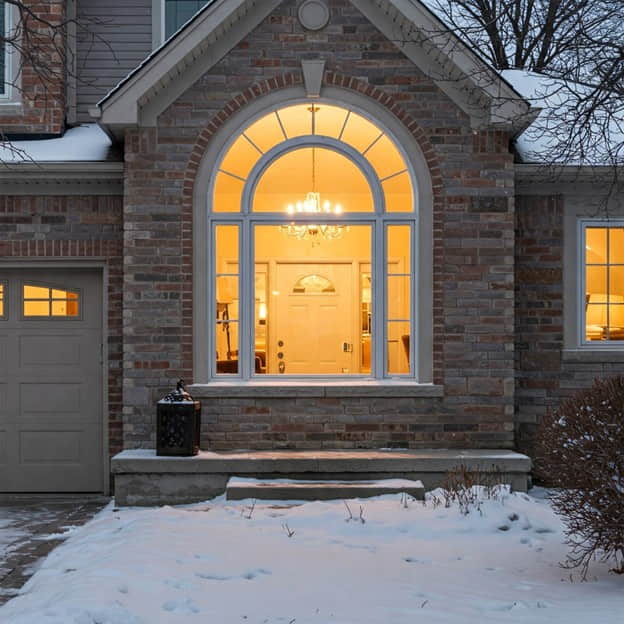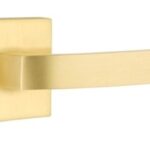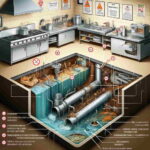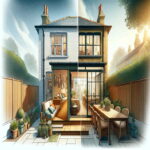Custom Shaped Windows: Is It Worth the Investment?

That question lingers for many Edmonton homeowners considering a refresh. The appeal of uniquely shaped windows is hard to ignore—arched tops, elegant circles, dramatic angles—but the decision is rarely just about looks. There’s often a quiet tug-of-war between creativity and caution. Will it actually boost home value? Are there hidden performance trade-offs? Is it a smart long-term move or just a pretty splurge?
In this article, we’ll explore what custom-shaped windows really offer beyond the surface. From cost and energy implications to emotional value and resale perspectives, we’ll break down everything you need to know. You’ll also get a clearer view of what’s possible—and practical—in Edmonton’s climate. Plus, we’ll help you understand how to find trustworthy local manufacturers who can bring your vision to life without the stress.
Let’s take a closer look at whether custom truly equals “worth it.”
1. What Are Custom-Shaped Windows?
Custom-shaped windows are exactly what they sound like: windows crafted to fit unique shapes that go beyond the typical rectangle or square. Think circles, half-moons, triangles, trapezoids, and even abstract curves.
Where do homeowners use them?
These windows often appear in architectural focal points—above entryways, staircases, lofts, or in vaulted living rooms. They can also pair with standard windows to create distinctive multi-window designs that elevate curb appeal.
What’s the draw?
It’s all about creating a unique look. These shapes reflect personality and architectural style. They help natural light flow into unusual areas and can highlight or soften sharp lines in a home’s design.
Limitations?
Not all materials work equally well with curved or angled frames. And depending on complexity, custom shapes may have fewer options for operability (many are fixed). That said, modern fabrication technologies—like computer-controlled (CNC) frame cutting, thermal bending for curved profiles, and advanced sealing systems—have made previously impractical shapes more feasible. Designs like oversized arches, full circles, or trapezoids with tight radii are now more accessible through local Edmonton manufacturers using specialized equipment.
2. Do They Add Real Value?
Financial ROI
Value is a nuanced thing. Financially, custom-shaped windows may not always add dollar-for-dollar returns like kitchen upgrades or additional bathrooms. However, when integrated into a cohesive design plan, they can strengthen overall appeal—especially in higher-end markets like Edmonton’s mature neighbourhoods or newer custom homes.
Emotional ROI
There’s a psychological payoff that many homeowners cite: pride in a home that feels more expressive and tailored. It becomes part of the story of the space. Still, this emotional ROI should be weighed alongside maintenance, complexity, and potential future challenges.
Performance Trade-offs
While shape alone doesn’t dictate performance, it’s important to note that complex shapes can present more challenges. Achieving airtight seals, accommodating triple-glazing, or integrating operable features like tilt-and-turn hinges or internal blinds can be more difficult in non-rectangular frames. Custom designs can still meet or exceed performance expectations, but often require more intensive planning and higher-grade materials to do so.
3. Cost vs. Benefit: The Real Math
Upfront vs. Lifetime Value
Custom windows do come with a premium. That premium reflects specialized labour, non-standard fabrication, and often, extended timelines. While high-performance glazing and strategic placement can contribute to lower heating bills over time, it’s best to view these savings as part of an overall efficiency strategy rather than a guaranteed offset. The real financial value often lies in long-term satisfaction and resale appeal rather than immediate energy returns.
Energy in Alberta’s Climate
Passive solar gain—the ability to harness direct sunlight for interior warmth—is most influenced by placement and orientation, not shape alone. However, certain shapes (like tall fixed panes or large south-facing arches) can enhance exposure when designed with this goal in mind. In Edmonton’s climate, incorporating high-performance coatings, gas fills, and insulated frames is key regardless of shape.
Standard vs. Custom Comparisons
Standard windows are typically easier and faster to source, and they benefit from consistent engineering for thermal performance and operability. Custom windows, while potentially less versatile in operability, offer unmatched design flexibility. The right choice depends on whether the project prioritizes individuality or practical performance. In some cases, a blended approach—combining standard and custom units—can deliver both.
4. Practical Considerations Before You Commit
Permits and Architecture
In Edmonton, most window replacements don’t require permits—unless they involve structural changes. But here’s the nuance: even enlarging or altering the shape of a window within the same opening can trigger building code requirements. For example, changing a bedroom window shape could affect egress compliance. Always verify with local code or work with a supplier who understands these parameters.
Sizing and Serviceability
Replacing a broken or fogged standard window can be a same-day job. Not so with a custom shape. Custom windows typically need to be remade from original specifications, especially if the manufacturer no longer stocks the profile. It’s worth confirming how long a local manufacturer keeps digital design files and whether they offer future-matching services.
Timeline and Installation Logistics
Lead times can vary based on shape complexity and materials. More complex units may need engineered support structures, which adds to both timeline and cost. Installation in hard-to-reach areas or during Edmonton’s coldest months can introduce weather-related risks, making spring or summer installation the safer window (pun slightly intended).
5. Finding the Right Partner in Edmonton
What to Ask
- Do you offer design consultations?
- What shapes and materials do you specialize in?
- How do your custom products perform in our climate?
- What warranties and service plans are available?
Red Flags vs. Green Flags
Be cautious of vague or generic answers about performance. Quality manufacturers should provide specific details about glazing options, hardware compatibility, and expected U-values. Green flags include transparency about manufacturing capabilities, installation partnerships, and long-term serviceability.
Why Local Sourcing Matters
Local manufacturers understand Edmonton’s climate, building codes, and seasonal scheduling constraints. That means more accurate recommendations, easier communication, and responsive support. “Window manufacturing near me” isn’t just convenient—it’s strategic when investing in something as unique as a custom shape.
Conclusion
Custom doesn’t have to mean complicated—or risky. With a qualified local partner, these windows can balance beauty with performance and offer lasting satisfaction.
Are they worth it? For many style-driven homeowners, yes—when expectations are realistic and the product fits long-term goals. The emotional value, visual impact, and curated design possibilities hold undeniable appeal. But awareness of maintenance, cost, and compatibility concerns is essential to making an informed decision.
Ready to explore the possibilities? Start by reaching out to Edmonton-based window manufacturers near me providers who specialize in bringing creative visions to life—reliably.
Frequently Asked Questions (FAQs)
Q. How do custom-shaped windows affect home resale value?
A: They can enhance curb appeal, which may help attract buyers—especially in custom homes or design-focused neighbourhoods. However, their resale value depends on design cohesion and energy performance.
Q. Are there energy efficiency options for custom-shaped windows?
A: Yes. Many Edmonton-based manufacturers offer custom units with double or triple glazing, low-E coatings, and insulated frames that meet or exceed efficiency standards. However, some performance features may be more complex to integrate in unconventional shapes.
Q. What should I ask a window manufacturer before getting custom shapes?
A: Focus on design capabilities, material choices, energy ratings, sealing systems, hardware compatibility, service options, and warranty coverage—especially for non-standard shapes.
Frequently Unasked Questions (FUQs)
Q. Will a custom-shaped window limit my future ability to replace or upgrade easily?
A: It might. If the design is rare or discontinued, matching it later could require a full re-order. Choosing a supplier who archives your specs digitally and offers continuity in materials is a smart safeguard.
Q. Could the window shape affect insurance or building code compliance?
A: It depends. Shapes that alter visibility, egress dimensions, or structural integrity may prompt review. Consulting professionals who know Edmonton’s specific code nuances can prevent surprises.
Q. Are there seasonal installation challenges unique to Edmonton’s climate?
A: Definitely. Frigid temperatures can interfere with caulking and sealing. Spring through early fall is generally best for installations, especially those involving unconventional shapes or locations requiring scaffolding.








Leave a Reply